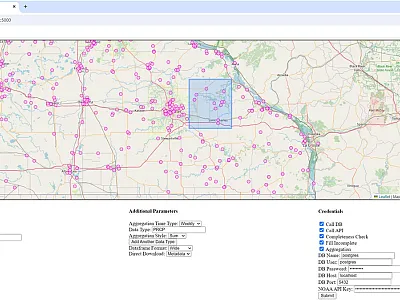The Legacy of Lead in City Soils

Though lead was phased out of gasoline, paint, and other products decades ago, this toxic heavy metal still lingers as contamination today. City soils, from parks to community gardens to playgrounds, are notable hotspots. Here, featuring research presented at the ASA, CSSA, and SSSA Annual Meeting and published in Urban Agriculture & Regional Food Systems, we look at several facets of the issue.
Video Summary
In 1915, the city of Durham, NC built its first city waste incinerator to handle the growing metropolis’s waste. Over the next half‐century, a total of five incinerators located in Durham’s neighborhoods, each combusting as much as 20 tons of trash each day—producing lead‐containing ash.
“At that time, few appreciated the health and environmental hazards of city waste ash,” says Duke University soil scientist Dan Richter, an SSSA Fellow. By the mid‐1940s, Durham closed the neighborhood incinerators and built a new central incinerator outside the city that incinerated the city’s solid waste until 1965. Meanwhile, the closed neighborhood incinerators, abandoned and unused, were converted into city parks.
At the 2022 ASA, CSSA, and SSSA Annual Meeting (https://bit.ly/3HUNugC) and this past September in Environmental Science & Technology Letters (https://doi.org/10.1021/acs.estlett.3c00488), Richter reported results of a study of lead concentrations in these three parks’ soils. Two contained soil exceeding 400 mg kg–1 or parts per million (ppm) of lead, until recently the U.S. Environmental Protection Agency’s (USEPA) threshold for safe soil lead in children’s play areas. Then in January this year, the USEPA lowered that threshold to 200 ppm—the first such update in nearly three decades. The news has prompted Richter and his colleagues to reinterpret their data “quite substantially,” he says. (Natural background lead levels in soils are typically around 15–30 ppm.)
Lead isn’t just a concern in Durham—it’s a common contaminant in many urban soils. Decades of past use of leaded gasoline and lead paint, as well as proximity to industrial facilities and other emitters, deposited lead that still lingers in the soil surrounding homes, blanketing playgrounds, and sitting under sports fields. “It’s all legacy contamination,” explains Anna Paltseva, a soil scientist at the University of Louisiana at Lafayette and chair of SSSA’s Urban & Anthropogenic Soils Division. “It’s not currently happening actively. It’s all accumulated in the soil—this is what we study now.”
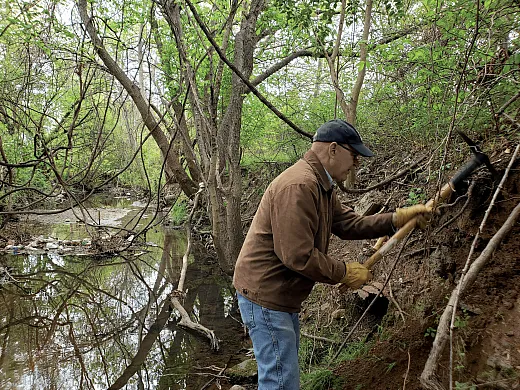
Childhood Lead Exposure

A compound called tetraethyllead (TEL) can be blamed for much of cities’ legacy lead. It made its way into gasoline in 1921 when engineers at General Motors’ research laboratories discovered it could cheaply prevent engine knock when added to fuel. Leaded gasoline was quickly adopted around the globe as more and more cars hit the streets. Their tailpipes spewed lead particulates that were deposited near roads, highways, and byways. Around the outside of older homes, chipping lead‐based paint provided another source of the metal in soil, and point sources such as smelters or the Durham waste incinerators were further contributors.
Today, there are fewer than a dozen lead smelters in the U.S. The federal government banned residential use of lead paint in 1978 (though millions of homes built before then still contain it). And the USEPA began to phase out TEL in gas in 1973; today, it’s only allowed in fuels for aircraft, farm equipment, and off‐road vehicles. But for many children who grew up during the heyday for leaded gas, the damage was already done. A 2022 study estimated that more than half of the contemporary U.S. population (more than 170 million people) was exposed to harmful levels of lead in childhood.
Children, especially those six years old and under, are particularly vulnerable to the heavy metal. “That’s when the most damage apparently occurs. It’s the early exposure,” Richter says. Lead can pass from environment into body by inhalation, absorption through your skin, or ingestion. In the case of soil lead, this is amplified by kids’ tendencies to play outside and on the ground or floor—and to put their hands and other objects in their mouth. Little ones’ gastrointestinal tracts absorb lead more readily than those of adults, and from there, it can move into the blood, tissues, and organs like the brain. Lead is a well‐documented developmental neurotoxin, and research has linked childhood lead exposure to slowed growth, learning difficulties, behavioral problems, and sensory deficiencies.
While the Centers for Disease Control and Prevention state there is no safe amount of lead (Pb) in a child’s blood, in 2021, the agency set a reference level of 3.5 µg Pb dL–1 to determine when a child’s levels are high. For soil, in the 1990s, the USEPA set safe lead limits for residential and children’s play areas at 400 ppm until this past January when they revised this soil guidance concentration to 200 ppm. Some states have created their own guidelines; California, for example, has set the bar lower still at 80 ppm.
Decline in Lead Levels in Soil, Blood
For a connection between lead in topsoil and children’s blood, look to New Orleans where Howard Mielke, a former researcher at Tulane University’s School of Medicine, has been mapping the city’s soil for decades. “Mielke has an invaluable long‐term soil archive,” Richter says. This archive provided the basis for Mielke’s 2019 study in the Proceedings of the National Academy of Sciences that connects decreases in soil lead levels directly to decreases in children’s blood lead in the Big Easy (https://doi.org/10.1073/pnas.1906092116). Between 2001 and 2017, Mielke and his team found a 44% decrease in soil lead, and from 2000–2005 and 2011–2016, data from the Louisiana Healthy Homes and Childhood Lead Poisoning Program show that lead in blood samples decreased 64%. When placed on a map, the two datasets overlap almost perfectly. “It’s nearly the same map,” Richter says.
Between the two periods Mielke studied, Hurricane Katrina hit New Orleans and flooded many of its neighborhoods, upturning and transporting soils in the process. But surprisingly, even unflooded areas’ soil lead decreased over time. In 2020, Richter collaborated with Mielke on a study in Detroit and Pontiac, MI, and found both the area’s median soil lead concentration and children’s blood levels declined overall during the preceding two decades (https://doi.org/10.1016/j.envres.2020.110112). “There is good news to this tragic story,” says Richter.
A variety of urban‐specific processes could be responsible for this decreasing trend in median soil lead, like construction, excavation, landscaping, and mulching. “City soil environments are also places with accelerated erosion,” Richter explains. In 2021, Richter and his former graduate student Anna Wade published a study of soil lead concentrations along 25 miles of Durham’s roadways and 62 single‐family homes (https://doi.org/10.1021/acs.est.1c00546). The results, which Wade also reported at the 2022 ASA, CSSA, and SSSA Annual Meeting (http://bit.ly/49xWa8p), indicate that soil lead is decreasing over time in Durham, too.
“What I concluded from that hypothesis is, well … that’s a good trajectory to be on,” Richter says of the overall declines. “But what about the hot spots that remain behind?”
Historical Street Map Helps Reveal Lead Hotspots
In those hotspots, lead can linger. “Lead is quite stable. It doesn’t move in the soil profile as much as arsenic, for example,” says the University of Louisiana’s Paltseva. “Lead is very insoluble. It’s one of the most insoluble of metals in the environment,” Richter explains further.
Following up on their lab’s sampling of soils along Durham’s streets, Richter and his student Enikoe Bihari turned to an unusual data source: a street map of the city created by Durham’s Department of Public Works in 1937. The map has proven useful for Richter’s colleagues in the social sciences as it delineates the boundaries of redlining and the segregation in Jim Crow‐era Durham. But the researchers found that it could be useful for soil science, too, when they noticed that the map located four municipal waste incinerators all within what are city parks today. In recently digitized online archives of the Durham Herald, the Durham Sun, and The Carolina Times, the researchers traced the closing of these incinerators in 1942 and the sites’ transformation into public parks about a decade later. Then after securing permission from the city’s Parks and Recreation Department, they designed a study to examine the spatial distribution of lead contamination.

“We sampled about 100 samples in each park, but what is most amazing is the geospatial distribution of lead is very different from park to park,” Richter reflects. East End Park, described by Richter as “pretty clean,” brought back soil lead levels in the 23–253 ppm range. The city built several tennis courts on this site, bringing in new soil and moving it around in the process, possibly dispersing or diluting the contaminated soils. Yet even within this single park there was a localized hotspot, in this case behind a locked fence, where historically a city sign and paint shop used to sit. The second park, Walltown Park, was “relatively low” overall but had high spikes between 416 and 1,338 ppm near paths and basketball courts. And “the third park has big problems,” says Richter, referring to East Durham Park. All but one sample from a several acre area are above 400 ppm with 12 samples above 1,000 ppm. The site is adjacent to a multi‐unit apartment building near a children’s play area with a jungle gym.
Urban Garden Contamination
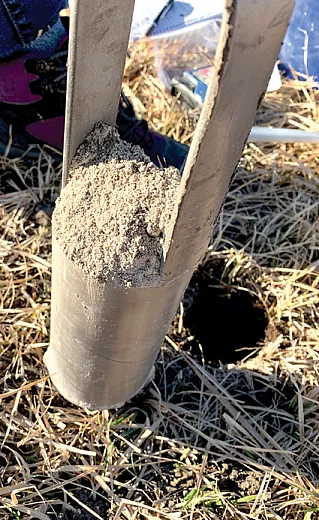
While children are especially endangered by lead exposure, it’s toxic to adults, too. Lead poisoning can cause high blood pressure, heart and kidney problems, and reproductive issues, and some professional fields like construction, mining, and foundry work experience heightened risk of exposure. But in a soil‐specific context, one particular concern is exposure during gardening or from eating produce grown in lead‐contaminated soil.
Certain crops uptake lead more than others. Fruiting crops—your peppers and tomatoes—are safer while root veggies can be more vulnerable. A more pressing concern is actual ingestion of contaminated soil directly if particles are stuck to the produce’s surface. “Some of them so strongly adhere to uneven surfaces of the vegetable—leafy greens, or especially herbs because they have lots of surface area,” says Paltseva.
Paltseva has found widespread soil lead contamination in gardens across New York City, some of which had concentrations many times more than the USEPA safe soil limit. Urban agriculture carries the promise and possibility of numerous health, economic, and community‐building benefits and has seen a bump in popularity in recent years. So has concern about pollution, Paltseva says. “The interest in city gardening during COVID may have increased awareness about soil pollution and lead risks.”
“The interest in city gardening during COVID may have increased awareness about soil pollution and lead risks.”
Out West in Salt Lake City and the surrounding area, urban agriculture is flourishing says Melanie Stock, a soil scientist at Utah State University. “There’s such an emphasis on local food, and there’s a strong interest in beginner farming, cooperative agriculture, and community gardens,” Stock says of the locale. “Much of our population is concentrated in the north, and we’re sandwiched between the Great Salt Lake and the mountains, so land is really at a premium.” The area also hosts a large refugee community and several beginner farmer programs set up to serve those populations, she explains.
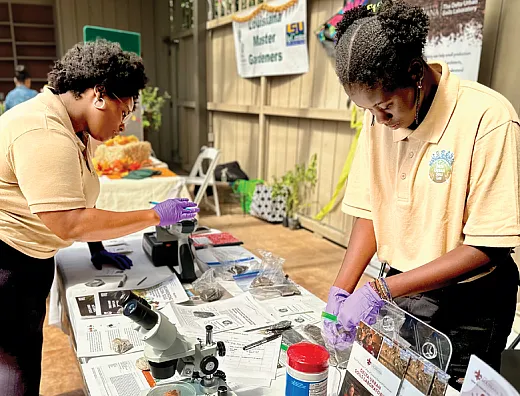
This network of community groups, including the International Rescue Committee’s New Roots Program and Wasatch Community Gardens, raised the issue of site selection with Stock and colleagues. The groups originally chose new garden locations without screening the soil, and often the areas available to them had risky use histories as former parking lots, gas stations, or abandoned residences or businesses built during the days of lead paint. “They wanted to be sure that the sites they’re picking out are clean, and if they weren’t, what kind of remediation steps they might need to take,” adds Clemson University Ph.D. student Eli Oliver, who worked on the project as a master’s student at Utah State University.
With guidance from their community partners, the researchers sampled 20 sites around Salt Lake County, testing the soil for lead and other contaminants including arsenic. (They also tested an orchard in the area where historical use of lead arsenate pesticide could be a source of contamination.) As Oliver and his co‐authors report recently in Urban Agriculture & Regional Food Systems (https://doi.org/10.1002/uar2.20050), only one of the gardens contained soil over the then‐USEPA threshold, a pleasant surprise to the researchers.
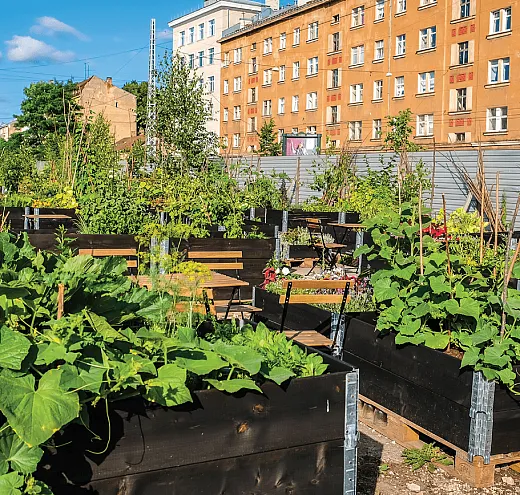
“I thought there would be a lot more contaminated soil with lead above 400 [parts per million],” says Utah State’s Paul Grossl, another collaborator on the project. The arsenic results were a different story— all measured concentrations were above the USEPA’s threshold for arsenic. But the gardens that did have high lead levels were mostly clustered in the central areas of Salt Lake City, and levels decreased moving further away from the urban core. This trend holds true across many cities that have been studied for soil lead, including in early soil lead studies by Mielke in Baltimore, MD and Minneapolis, MN, in Detroit, in Wade’s studies of Durham, and in Paltseva’s own studies in Lafayette. “What we find is very similar to what we would find in New Orleans or New York or many other cities: the inner city historical downtown area has higher concentrations of metals,” she says.
New Tools Provide Instant Measurements

For researchers and concerned gardeners alike, new tools have come online to assess soil samples quickly and accurately without extensive laboratory analysis. “The traditional ways of measuring total metals in soils take weeks to have a few dozen samples analyzed,” Duke’s Richter says. Now, handheld and portable X‐ray fluorescence (XRF) analyzers can provide near‐instant readings in the field. “It gives us measurements within tens of seconds,” Paltseva elaborates. “It allows for very quick results, and you can use it in the field to know where contamination is,” making it well suited for on‐the‐ground sampling efforts and community use.
Paltseva’s group at the University of Louisiana, the Delta Urban Soils Lab, does outreach in the state and provides soil‐testing services for stakeholders around the U.S. They are also studying heavy metal contamination in parks in Chicago as well as mapping contamination in Lafayette. Paltseva presented some of this work at the 2023 ASA, CSSA, and SSSA Annual Meeting (https://bit.ly/42GYibZ). One takeaway from those efforts, she says, is how variable soil lead levels can be within the same area. “If you take three houses, one of them will be contaminated and two won’t be,” she says. “It’s also interesting how in one property we can see such differences in concentrations.”
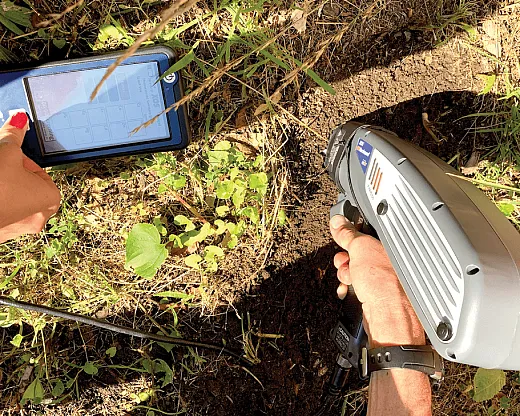
While a large body of research is devoted to studying approaches for limiting lead bioavailability in soil, a variety of low‐tech remediation options exist for concerned homeowners or gardeners. Removal and replacement, encapsulating, liming, and the implementation of conservation tillage practices can help address lead contamination. Paltseva and others have also found that compost or mulch can be effective. When added to soil, compost both dilutes and lowers lead’s bioavailability through the formation of organo‐mineral complexes, she explains. One of Paltseva’s students has even tested compost made of an iconic Louisiana product: crawfish and shrimp shells. “There are some cool opportunities to see how we can recycle our waste and also remediate soil,” she says.
Paltseva has created several resources (https://bit.ly/3UBfo95) for folks to learn about these options. In Salt Lake County, Oliver, Stock, and Grossl also focused on outreach. They developed suggested contaminant level thresholds to provide soil management guidelines for the area and created peer‐reviewed fact sheets (https://bit.ly/3OGLUCI) to communicate their results and provide gardeners with recommendations. “It was this beautiful combination between extension needs and research,” Stock says of the project.
Expanding Archival Strategy to Uncover Lead in Other Cities
Last summer, the city of Durham brought in an outside testing firm to replicate Richter’s sampling at the former incinerator site parks. The city’s Department of Parks & Recreation cordoned off several areas within the parks to restrict public access, and as of early February, has requested funding for “solutions” in the city’s upcoming budget and asked the county Department of Public Health to provide more blood lead testing.
As the city works on addressing the contamination, Richter plans to employ his archival strategy on other municipalities, investigating newspaper archives and other historical documents to determine where historical sources of lead contamination might have lurked. He’s already found evidence of historical city waste incinerators in newspaper archives from Raleigh, Greensboro, and Charlotte, NC.
Because the legacy of lead contamination will live on from the children of the past to the soils of today, the problem isn’t going to go away with the phasing out of lead in products. “It’s going to be a problem for a long time, even if the soil concentrations are going down, even if we know that children are less exposed than they were in the past,” Richter says. “It’s going to be something to work on for quite a while.”

DIG DEEPER
Check out some of the research mentioned in this article:
Bihari, E., Grewal, G., & Richter, D.D. (2023). Legacies of Pre‐1960s Municipal Waste Incineration in the Pb of City Soils. Environmental Science & Technology Letters, 10, 897–902. https://doi.org/10.1021/acs.estlett.3c00488
Oliver, F., Stock, M.N., Grossl, P., & Cardon, G. (2023). Surveying and localized screening of soil contamination with the growth of urban community agriculture in northern Utah. Urban Agriculture & Regional Food Systems, 8, e20050. https://doi.org/10.1002/uar2.20050
Paltseva, A., Jenkins, E., & Heafner, H. (2023) Assessing heavy metal levels and mitigating soil contamination in urban parks: insights from Chicago and Lafayette, LA. In Abstracts of the 2023 ASA, CSSA, and SSSA International Annual Meeting, St. Louis, MO. https://bit.ly/42GYibZ
Richter, D., & Bihari, E. (2022) Lead from historic waste incineration in city‐park soils. In Abstracts of the 2022 ASA, CSSA, and SSSA International Annual Meeting, Baltimore, MD. https://bit.ly/3HUNugC
Wade, A., & Richter, D. (2022) Impact of pedogenesis on urban soil Pb In Abstracts of the 2022 ASA, CSSA, and SSSA International Annual Meeting, Baltimore, MD. http://bit.ly/49xWa8p
Text © . The authors. CC BY-NC-ND 4.0. Except where otherwise noted, images are subject to copyright. Any reuse without express permission from the copyright owner is prohibited.




